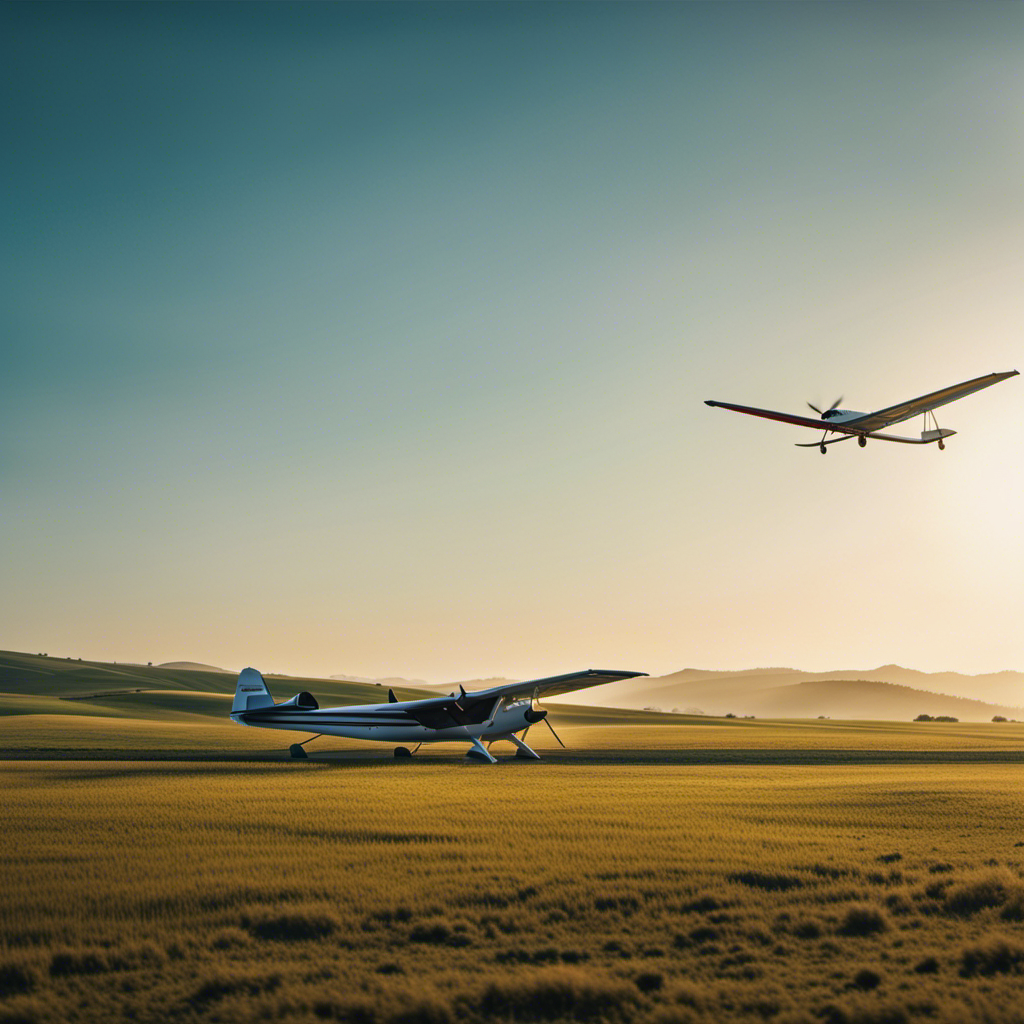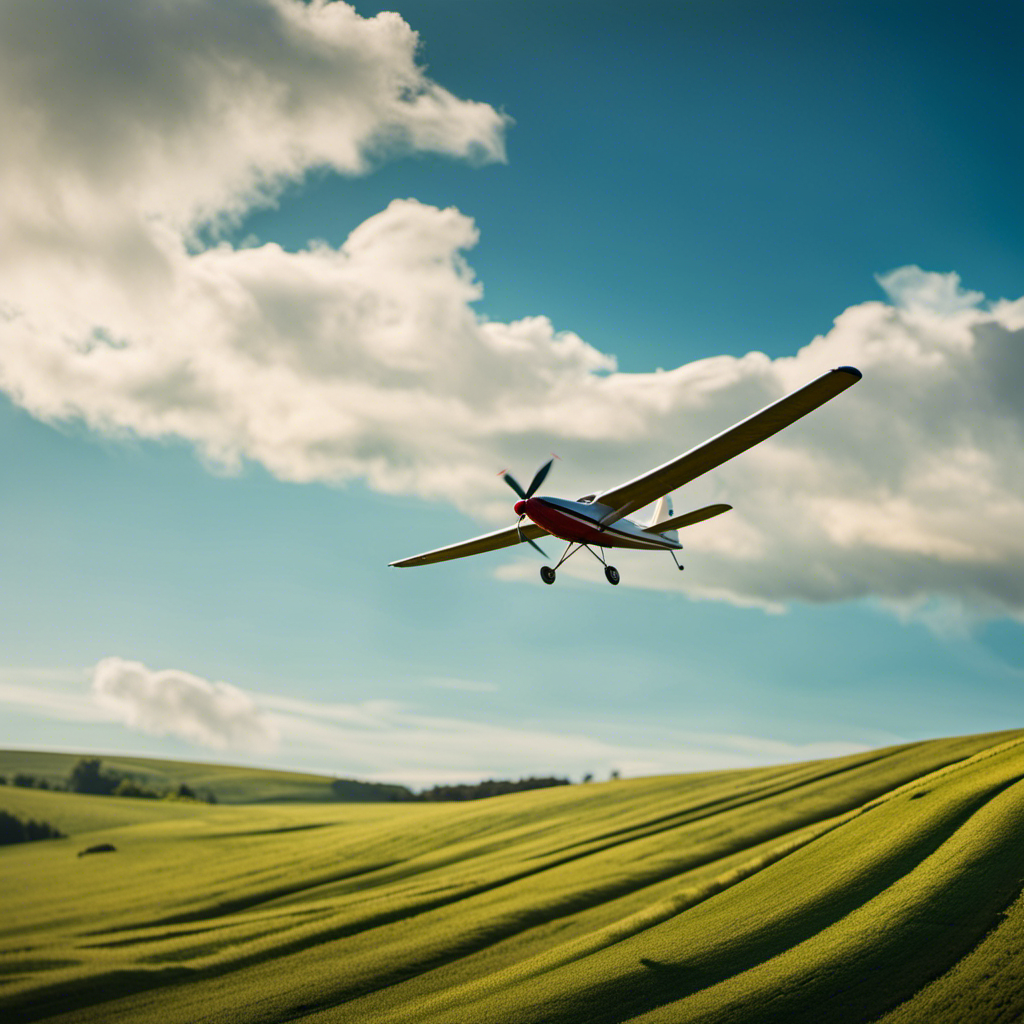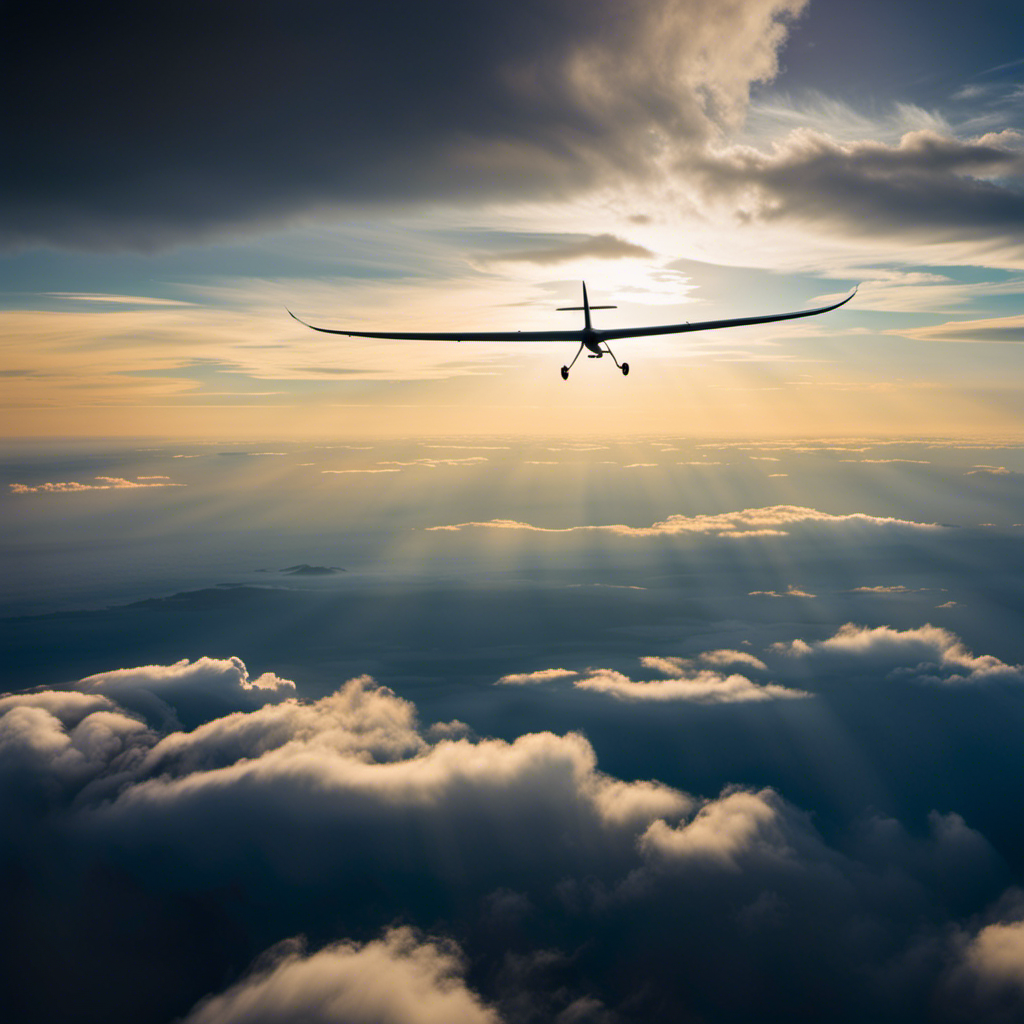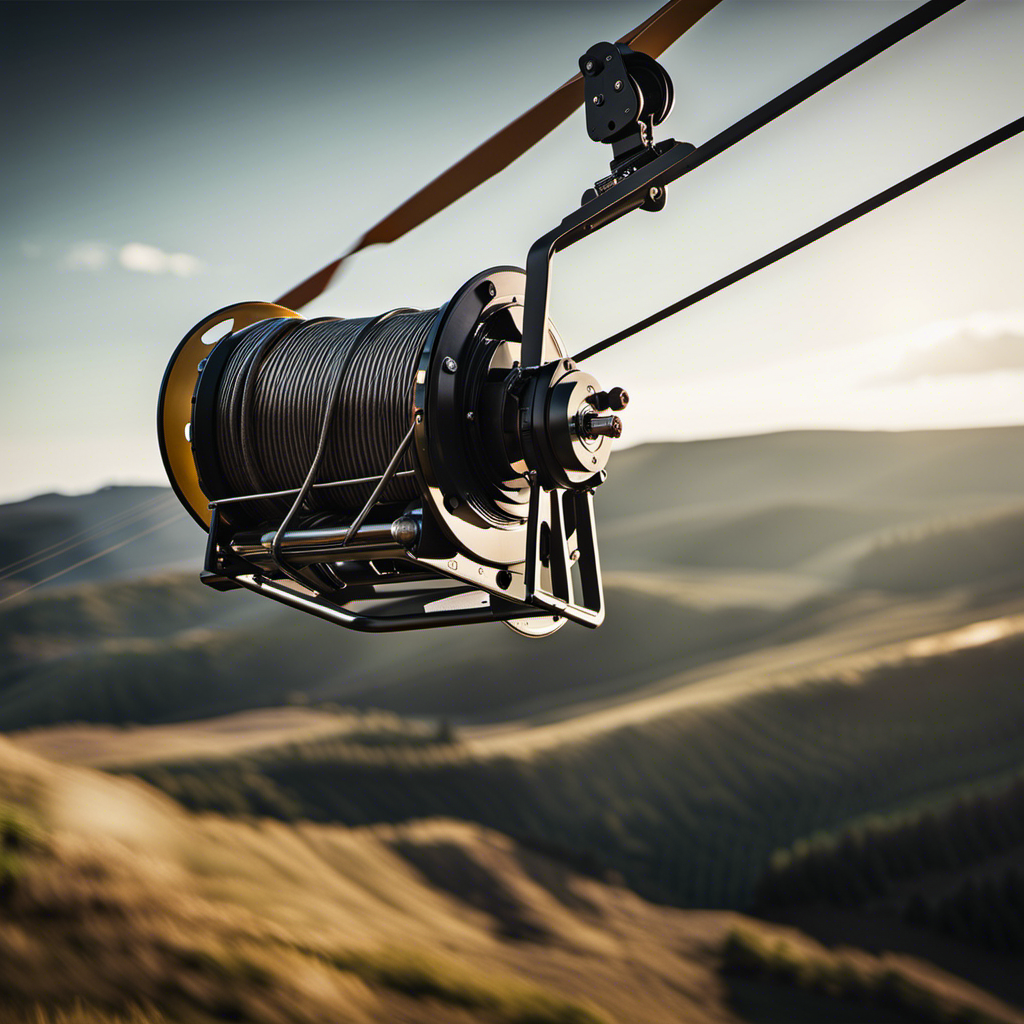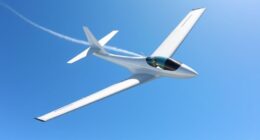Hello! Are you getting ready for your first glider lesson? It’s going to be a unique adventure for sure. From getting ready for the flight to soaring through the skies, this article has all the information you need.
I’ll walk you through what to expect, step by step, so you can feel confident and prepared. So buckle up and get ready for an adventure like no other. Trust me, once you’re up there, you’ll never want to come back down.
Key Takeaways
- Pre-flight preparations and familiarization are essential for a safe and smooth glider flight.
- Learning proper takeoff techniques is crucial for a successful flight and sets the tone for the rest of the experience.
- Overcoming fears and anxieties about flying leads to an exhilarating gliding experience and unlocks new possibilities.
- Communication, navigation, and safety measures, including mastering flight controls, effective communication with air traffic control, and understanding navigation instruments, are vital for a safe and efficient flight.
Pre-Flight Preparations
Before taking off for your glider lesson, you’ll want to make sure you complete all the necessary pre-flight preparations. These preparations are essential for a smooth and safe flight experience.
First, check the weather conditions to ensure they are suitable for gliding. Look for clear skies, minimal wind, and no precipitation.
Next, inspect the glider thoroughly, paying close attention to the wings, control surfaces, and landing gear. Ensure that all components are in good working condition and that there are no signs of damage or wear.
Additionally, familiarize yourself with the emergency procedures and communication systems in the glider.
Getting Familiar with the Glider
In order to fully understand the glider and how it functions, it is crucial to explore its different parts. The wings and control surfaces, as well as the cockpit and landing gear, all play important roles in flight.
Once you are familiar with the glider, it is important to learn how to properly board and secure yourself. This is essential for a safe and comfortable flight experience.
Lastly, understanding the importance of balance and weight distribution is crucial for maintaining stability and control during flight.
Exploring the different parts of the glider
Take a look at the various parts of the glider and get familiar with them before your first flight. As a seasoned glider pilot, I can assure you that having a good understanding of the different components will make your flying experience more enjoyable and safe. Let’s explore the four main parts of a glider:
| Part | Function |
|---|---|
| Wings | Provide lift and support the glider in the air |
| Fuselage | Houses the cockpit, controls, and instruments |
| Tailplane | Stabilizes the glider and controls pitch |
| Landing Gear | Enables takeoff, landing, and ground maneuvering |
Now that you know the basics, it’s time to move on to the next step: learning how to properly board and secure yourself in the glider. This is essential for a safe and comfortable flight, so let’s dive into it.
Learning how to properly board and secure yourself in the glider
Now that you’re ready to board, make sure to securely fasten your seatbelt and adjust the harness for a comfortable and safe flight.
As a seasoned glider pilot, I understand the importance of properly securing oneself in the glider. The seatbelt and harness are not just for show; they play a critical role in ensuring your safety during the flight.
Once you’ve fastened your seatbelt and adjusted the harness, you’ll feel a sense of security and stability. This will allow you to fully focus on the upcoming experience.
Understanding how to balance and distribute weight within the glider is essential for maintaining stability and control. By mastering this skill, you’ll be able to navigate smoothly through the air and enjoy the breathtaking views from above.
Understanding the importance of balance and weight distribution
Make sure you understand the importance of balance and weight distribution in order to maintain stability and control during your glider flight.
As a glider pilot, I can tell you that proper balance and weight distribution are essential for a safe and enjoyable flight.
When you are seated in the glider, make sure your body is centered and your weight is evenly distributed. This will ensure that the glider remains stable and responsive to your control inputs.
Remember to keep your movements smooth and deliberate, avoiding any sudden shifts that could upset the balance of the glider.
Taxiing and Takeoff
When it comes to taxiing and takeoff in a glider, there are a few key points to keep in mind.
First, learning how to steer the glider on the ground is crucial for a successful takeoff.
Understanding the takeoff procedure and techniques is also important, as it sets the stage for a smooth and controlled ascent.
Lastly, overcoming any fears or anxieties about taking flight is essential for a confident and enjoyable experience in the air.
As someone who has been through these steps, I can assure you that with proper instruction and practice, you’ll be ready to soar through the skies in no time.
Learning how to steer the glider on the ground
As you’re getting ready for your initial glider lesson, you’ll learn how to steer the glider on the ground. This is an essential skill that will help you navigate the glider safely and efficiently. Here are five key points to keep in mind as you master this technique:
- Maintain a light touch on the controls to prevent oversteering.
- Use your feet to control the glider’s direction by applying pressure on the rudder pedals.
- Keep your eyes focused on the direction you want to go, rather than looking down at the controls.
- Practice making small adjustments to maintain a straight track on the runway.
- Gradually increase your speed as you gain confidence in your ability to steer the glider effectively.
Once you have mastered the art of steering on the ground, you will be ready to move on to understanding the takeoff procedure and techniques.
Understanding the takeoff procedure and techniques
Understanding how to smoothly execute the takeoff procedure is crucial for a successful glider flight. As an experienced glider pilot, I can tell you that the takeoff is the moment when you transition from the ground to the sky, and it sets the tone for the rest of your flight.
The key is to have a solid understanding of the glider’s controls and the aerodynamics involved. You need to apply the right amount of back pressure on the control stick while gradually releasing the brakes to generate lift. It may feel a bit nerve-wracking at first, but with practice, it becomes second nature.
Once you master the takeoff, you will be ready to overcome any fears or anxieties about taking flight, and fully embrace the thrill and freedom of gliding through the air.
Overcoming any fears or anxieties about taking flight
Once you conquer your fears, taking flight in a glider becomes an exhilarating experience. As someone who has faced and overcome my own anxieties about flying, I can assure you that the feeling of soaring through the sky is unlike anything else.
Here are a few things to keep in mind as you prepare to overcome your fears and embark on this incredible adventure:
- The rush of adrenaline as you lift off the ground is both nerve-wracking and thrilling.
- The sense of freedom and weightlessness you experience while gliding through the air is indescribable.
- The breathtaking views from high above will leave you in awe of the beauty of the world.
By pushing through your fears, you will unlock a new world of possibilities and discover the joy of flight.
Now, let’s delve into the next section, where we will explore the art of soaring and controlling the glider.
Soaring and Controlling the Glider
During your initial glider lesson, you’ll learn how to soar and control the glider. Soaring is the art of using the natural currents of air to gain altitude and stay aloft. It’s a thrilling experience, as you harness the power of the wind to keep you airborne. Controlling the glider involves mastering the various flight controls, such as the ailerons, elevator, and rudder. These controls allow you to change direction, adjust altitude, and maintain stability in the air. To give you a better understanding, here’s a table outlining the main flight controls and their functions:
| Flight Control | Function |
|---|---|
| Ailerons | Control roll and bank |
| Elevator | Control pitch and altitude |
| Rudder | Control yaw and direction |
As you become familiar with these controls, you’ll have the ability to maneuver the glider with precision and confidence. Now, let’s explore the next exciting aspect of glider flying: communication and navigation.
Communication and Navigation
When it comes to gliding, communication and navigation are crucial skills to master.
Learning how to effectively communicate with air traffic control ensures a safe and efficient flying experience.
Understanding the importance of navigation instruments helps pilots accurately navigate their flight paths and maintain situational awareness.
Learning how to communicate with the air traffic control
Before you start your initial glider lesson, it’s important to learn how to communicate with air traffic control. As a pilot, clear and effective communication with ATC is crucial for a safe and successful flight.
Here are four key things to keep in mind when communicating with air traffic control:
-
Use correct phraseology: ATC has specific phrases and terminology they use to communicate instructions and information. Learning and using these phrases correctly will help you understand and be understood by ATC.
-
Stay calm and concise: When communicating with ATC, it’s important to remain calm and speak clearly. Keep your transmissions concise and to the point, providing only the necessary information.
-
Listen actively: Pay attention to the instructions given by ATC and acknowledge them promptly. Active listening ensures you receive and process the correct information.
-
Repeat or clarify when needed: If you didn’t understand an instruction or need further clarification, don’t hesitate to ask ATC to repeat or clarify it. It’s better to get clear instructions than to proceed with uncertainty.
Understanding how to communicate effectively with air traffic control enhances your safety and the efficiency of your flight.
Now, let’s delve into understanding the importance of navigation instruments.
Understanding the importance of navigation instruments
To navigate effectively during your flight, it’s crucial to understand the importance of navigation instruments. These instruments provide vital information about your aircraft’s position, altitude, heading, and speed, allowing you to safely reach your destination. Let me introduce you to some of the key navigation instruments used in aviation:
| Instrument | Description | Purpose |
|---|---|---|
| Attitude Indicator | Displays the aircraft’s pitch and roll | Helps maintain level flight and proper aircraft attitude |
| Airspeed Indicator | Indicates the aircraft’s speed | Essential for maintaining desired airspeeds |
| Navigation Radio Receiver | Receives navigational signals | Helps navigate along established flight routes |
Following flight paths and maintaining situational awareness
As a glider pilot, understanding the importance of navigation instruments is crucial for safe and successful flights. These instruments provide valuable information about our position, altitude, and course. However, it is equally important to know how to follow flight paths and maintain situational awareness while in the air.
Here are a few key points to keep in mind:
-
Study the flight plan: Before taking off, review the planned route and any potential restrictions or landmarks along the way.
-
Monitor your position: Continuously track your location using a combination of visual references, GPS, and navigation instruments.
-
Stay vigilant: Keep an eye on other aircraft in the vicinity and be aware of any changes in weather conditions or air traffic.
-
Adjust as needed: Be prepared to make course corrections or deviate from the planned route if necessary to avoid obstacles or maintain safety.
By following these guidelines, you can ensure that you stay on track and maintain a clear understanding of your surroundings during the flight.
Now, let’s move on to the next crucial phase of glider flying: landing and debriefing.
Landing and Debriefing
After landing, you’ll receive a thorough debriefing to discuss your performance during the glider lesson. This is an important part of the learning process as it allows you to reflect on your flight and identify areas for improvement. The instructor will provide feedback on your technique, communication, and decision-making skills. They may also review the flight path and discuss how well you maintained situational awareness. To give you an idea of what to expect, here is a breakdown of the debriefing process:
| Topic | Points Discussed | Areas for Improvement |
|---|---|---|
| Takeoff | Smoothness, technique | Improving coordination |
| Airborne | Control inputs | Maintaining proper speed |
| Landing | Approach, flare | Improving touchdown |
The debriefing is an opportunity to learn and grow as a pilot. It sets the foundation for the post-flight reflection, where you can further analyze your experience and make adjustments for future flights. Transitioning into this next phase, it’s important to take the lessons learned and apply them to your ongoing journey in glider flying.
Post-Flight Reflection
Reflecting on my first glider lesson, I can’t help but recall the mix of excitement and nervousness that coursed through me as I soared through the sky. The adrenaline rush and the feeling of weightlessness were truly exhilarating.
Looking ahead, I am eager to set goals for future lessons and progress in my gliding journey, striving to master new techniques and expand my knowledge of this incredible sport.
Above all, I have developed a deep appreciation for the beauty and freedom that gliding offers. I witness breathtaking sunsets from the cockpit and feel the wind beneath my wings.
Reflecting on your first glider lesson and the emotions experienced
During your first glider lesson, you’ll be amazed by the range of emotions you’ll experience. As an experienced glider pilot, I can assure you that the mixture of excitement, nervousness, and anticipation is completely normal.
The moment you lift off the ground and feel the rush of the wind against your face, all your worries fade away. The freedom and exhilaration of soaring through the sky is unlike anything else.
You might feel a sense of awe as you take in the breathtaking views below, or a sense of accomplishment as you successfully maneuver the glider. These emotions are all part of the journey into the world of gliding.
Now, let’s discuss how you can set goals for future lessons and progress in your gliding journey.
Setting goals for future lessons and progression in gliding
To make progress in your gliding journey, it’s important to set specific goals for each future lesson. Setting goals allows you to have a clear direction and focus during your training.
Whether it’s mastering a particular maneuver, improving your communication skills with your instructor, or increasing your knowledge of meteorology, setting goals helps you measure your progress and stay motivated.
As you gain experience, you can set more challenging goals that push your limits and expand your skills. By setting achievable goals and working towards them, you’ll steadily advance in your gliding abilities and become a more proficient pilot.
As you continue your gliding journey, appreciating the beauty and freedom of gliding becomes an integral part of the experience.
Appreciating the beauty and freedom of gliding
Experiencing the beauty and freedom of gliding is truly exhilarating. As a glider pilot, I have had the privilege of witnessing the awe-inspiring sights and feeling the incredible sense of liberation that comes with soaring through the sky. Here are some of the remarkable aspects of gliding that make it so special:
-
The breathtaking views: From high above, you can marvel at the picturesque landscapes, rolling hills, and sparkling bodies of water below. It’s a unique perspective that allows you to appreciate the beauty of the world in a whole new way.
-
The tranquility and serenity: Gliding is a peaceful and quiet experience. The absence of engine noise creates a serene environment, where you can enjoy the peacefulness of the sky and connect with nature.
-
The sense of freedom: Gliding gives you a sense of liberation like no other. As you glide effortlessly through the air, you feel a sense of freedom and weightlessness that is unmatched.
Transitioning into the subsequent section about safety and emergency procedures, it is important to note that while gliding offers a thrilling and liberating experience, it is crucial to be prepared for any unforeseen circumstances that may arise.
Safety and Emergency Procedures
Before you even step foot in the glider, familiarize yourself with the safety and emergency procedures. As an experienced glider pilot, I understand the importance of being prepared for any situation that may arise during a flight. Here is a table outlining some of the key safety and emergency procedures that you should be aware of:
| Safety Procedures | Emergency Procedures |
|---|---|
| Pre-flight inspection | Emergency landing |
| Seatbelt fastening | Release from tow |
| Communication signals | Deployment of emergency parachute |
| Emergency landing areas | Emergency radio procedures |
| Weather monitoring | Emergency evacuation |
Continuing Education and Certification
As I progress in my glider training, it is important to continue my education and pursue certification to further develop my skills and knowledge in this exhilarating sport.
Obtaining additional certifications not only enhances my abilities as a pilot, but also allows me to participate in more advanced and exciting aspects of gliding. There are various certification levels to strive for, such as private pilot, commercial pilot, and flight instructor. Each level requires a combination of flight hours, written exams, and practical tests.
Embracing the Gliding Community
Joining the gliding community allows you to connect with experienced pilots and share your passion for this exhilarating sport. As someone who has been a part of this community for years, I can attest to the incredible benefits it brings.
Here are four reasons why embracing the gliding community is a must:
-
Learning from experienced pilots: Being surrounded by seasoned glider pilots can accelerate your learning curve and help you master the art of gliding faster.
-
Discovering new flying locations: The gliding community is filled with individuals who have explored various flying destinations. By connecting with them, you can uncover hidden gems and fly in breathtaking locations you never knew existed.
-
Building lifelong friendships: The shared love for gliding creates a strong bond among community members. You’ll meet like-minded individuals who will become lifelong friends and share unforgettable experiences with you.
-
Access to resources and support: The gliding community is a wealth of knowledge and resources. From equipment recommendations to technical advice, you’ll have access to a network of experts who can help you navigate your gliding journey with confidence.
Embrace the gliding community and let your passion take flight!
Frequently Asked Questions
Can I bring my own personal camera to document my first glider lesson?
Yes, you can bring your own personal camera to document your first glider lesson. It’s a great way to capture the excitement and memories of your experience in the skies. Just make sure to secure it properly and follow any safety guidelines provided by your instructor.
Is it common for people to feel nauseous or dizzy during their first glider lesson?
Yes, it is common for some people to feel a bit nauseous or dizzy during their first glider lesson. In fact, studies show that about 20% of beginners experience these sensations. However, they usually subside as you become more accustomed to flying.
Are there any age restrictions for taking a glider lesson?
There are typically no age restrictions for taking a glider lesson. As long as you meet the physical requirements and can follow instructions, anyone can enjoy the thrill of soaring through the sky.
How long does it typically take to complete the certification process for glider flying?
The certification process for glider flying typically takes several months to complete. It involves a combination of flight training, written exams, and a practical flight test. It is important to be dedicated and committed to the process in order to earn your glider flying certification.
Are there any physical fitness requirements to participate in a glider lesson?
There are no specific physical fitness requirements to participate in a glider lesson. However, it is important to have good overall health and be able to handle the physical demands of flying, such as sitting for extended periods and operating the controls.
Conclusion
In conclusion, your first glider lesson is an exhilarating experience that will leave you craving for more.
From the pre-flight preparations to the post-flight reflection, every moment is filled with learning and excitement.
As you embrace the gliding community, you’ll realize that the sky is not the limit, but a playground for your dreams to take flight.
So, why wait any longer? Take the leap and discover the freedom and joy of soaring through the air.
Are you ready to spread your wings and soar like a bird?
With a heart that soars as high as the skies, Aria, affectionately known as “Skylark,” is the driving force behind Soaring Skyways. Her journey into the gliding world began as a young dreamer gazing up at the soaring birds, yearning to experience the weightlessness and freedom they embodied. With years of experience both in the cockpit and behind the scenes, Aria’s commitment to the gliding community is unwavering.
